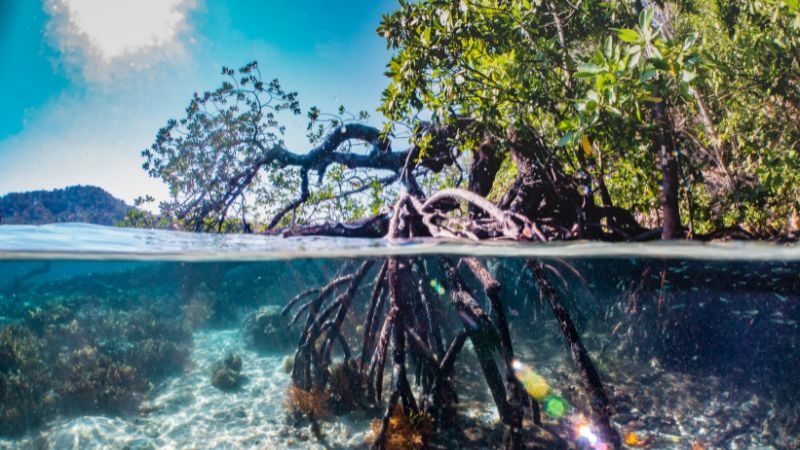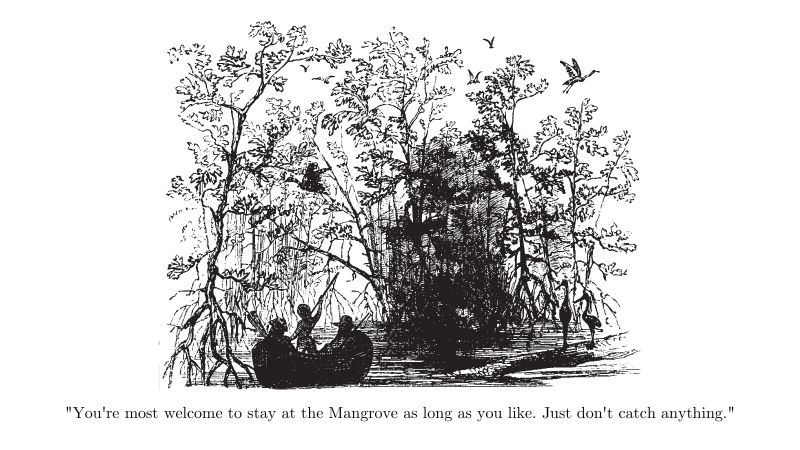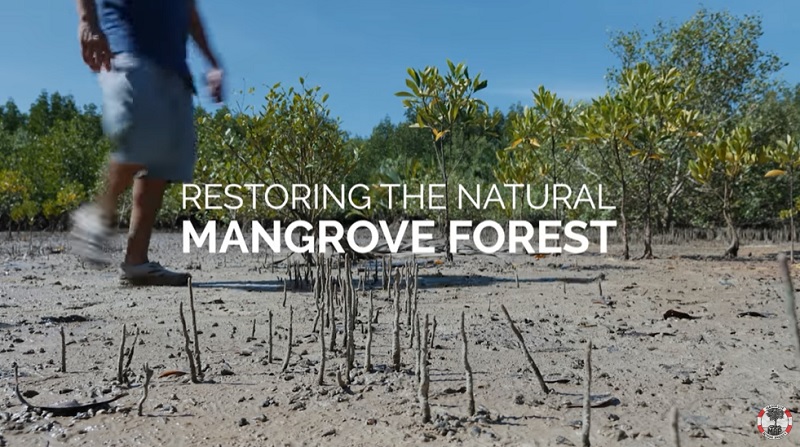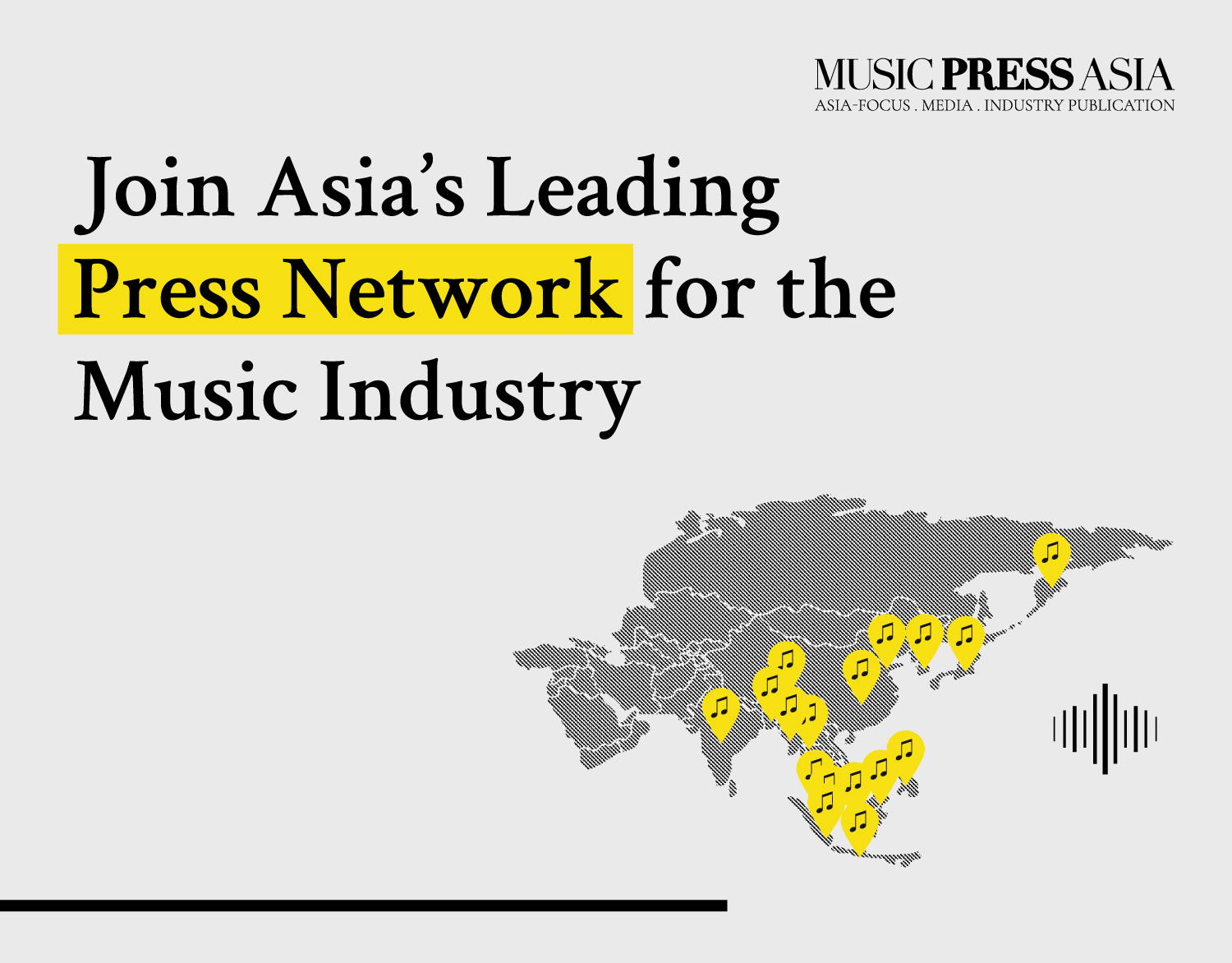Maintaining Life At The Mangroves

CONSERVATION: International Day for the Conservation of the Mangrove Ecosystem is observed every year on July 26 to raise awareness of the importance of mangrove ecosystems as “a unique, special and vulnerable ecosystem”.
Adopted by the General Conference of UNESCO in 2015, it’s also a day dedicated to promoting solutions for their management, conservation, and sustainable uses.
Mangroves are rare ecosystems, alive in every sense, between the land and sea in tropical regions. Its ecosystem contributes to the well-being, food security, and protection of coastal communities. Moreover, it maintains a rich biodiversity for fish and crustaceans that sustains complex communities.
Mangroves are salt-tolerant plants of tropical and subtropical intertidal regions of the world. They also act as a natural defense against storm surges, tsunamis, sea level rise, and erosion and act as huge carbon sinks which are able to sequester two to four times more carbon than mature rainforests.
Additionally, they help to shore up our coastlines and reduce the impact of severe flooding while supporting the biodiversity of the area.
Landscapes, music, gastronomy, knowledge, legends, and stories of people gain meaning in the life that thrives in mangroves wonderfully yet threatened by a vision of development of coastal areas. Favoring deforestation, pollution, and the alteration of the life cycles of nature are factors that contribute to climate change.

Facts about the Groves
-Mangroves act as boundaries between the land and sea and provide protection and food security to many coastal communities.
– Mangroves face environmental threats; they are disappearing 3-4 times faster than forests.
– Their soils are highly effective carbon sinks and can store 10 times more carbon compared to land-based forests.
– They protect water quality by removing nutrients and pollutants from stormwater runoff before they reach seagrass habitats and coral reefs.
Therefore, it is urgent to tell the story of how life takes place in mangrove ecosystems to preserve that biocultural heritage that the original people have been accumulating and transmitting from generation to generation.
Mangrove Restoration
Mangrove Action Project (MAP) promotes and teaches its best practice ‘Community-Based Ecological Mangrove Restoration’ (CBEMR) technique. It has actively rehabilitated mangroves in Thailand and Indonesia, as part of post-tsunami recovery, while being involved in consulting on shoreline and mangrove restoration projects elsewhere.
The below takes us to the Andaman Coast in Southern Thailand, and explores the importance of mangrove forests. Donate to their efforts, here.

Other related news:
MALAYSIA: According to News Strait times, UMW Toyota Motor Sdn. Bhd. (UMWT) and UMW Holdings Berhad (UMW) is planning to plant some 300,000 trees over the next two years. The move is said to be in line with their journey towards offsetting CO2 emissions and realising their zero carbon goals, which is in part of Toyota Global’s commitment to achieve carbon neutrality by 2050.
INDIA: Kufos conducts training programme for schoolchildren: As part of World Mangrove Day celebrations, the Centre for Climate Resilience and Environment Management at the Kerala University of Fisheries and Ocean Studies (Kufos) conducted a one-day training and awareness programme on mangroves for schoolchildren on its Puthuvype campus on Monday.













